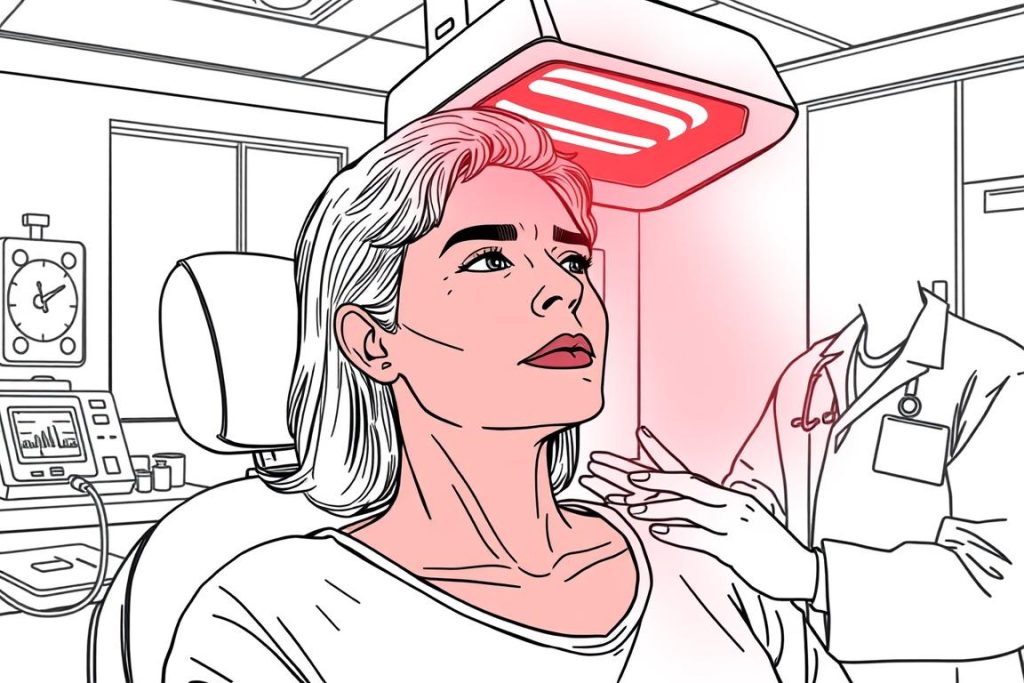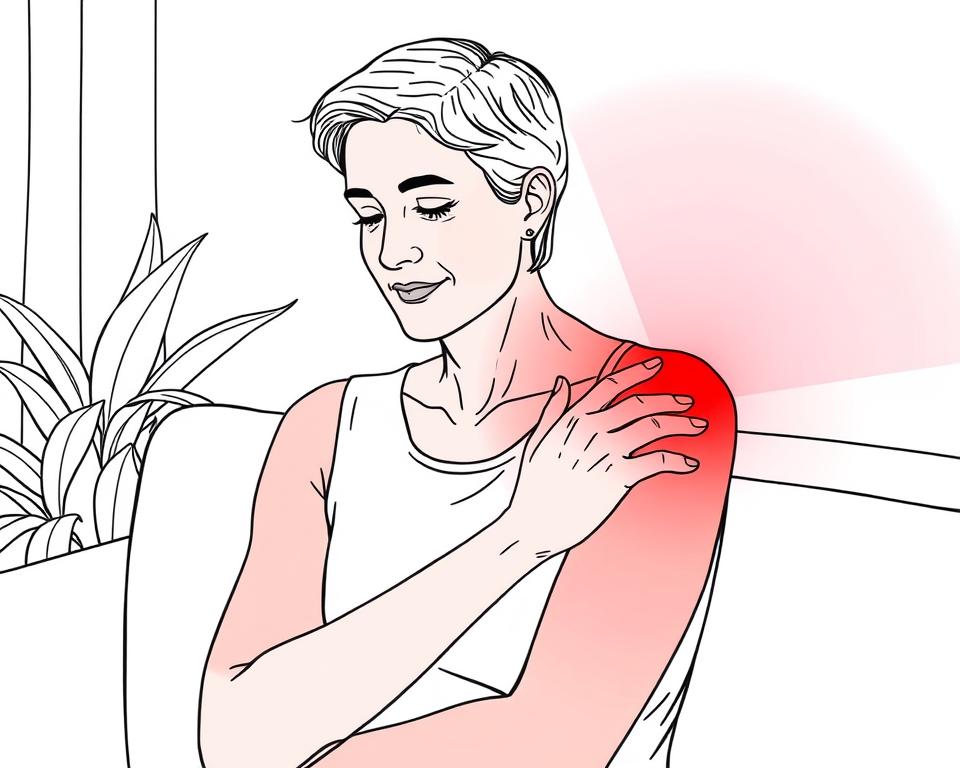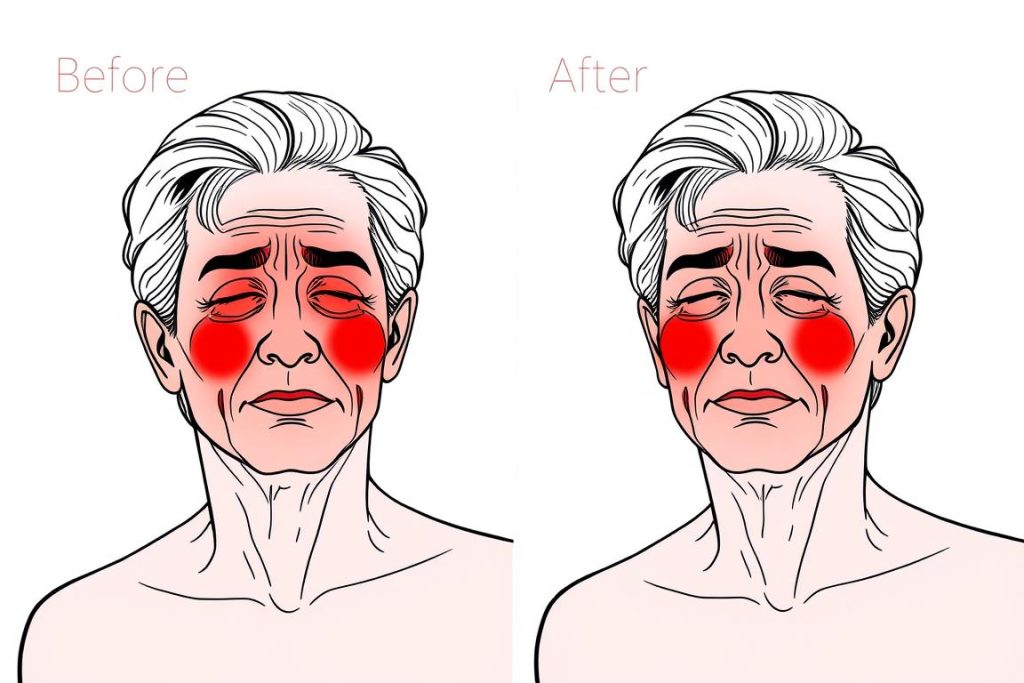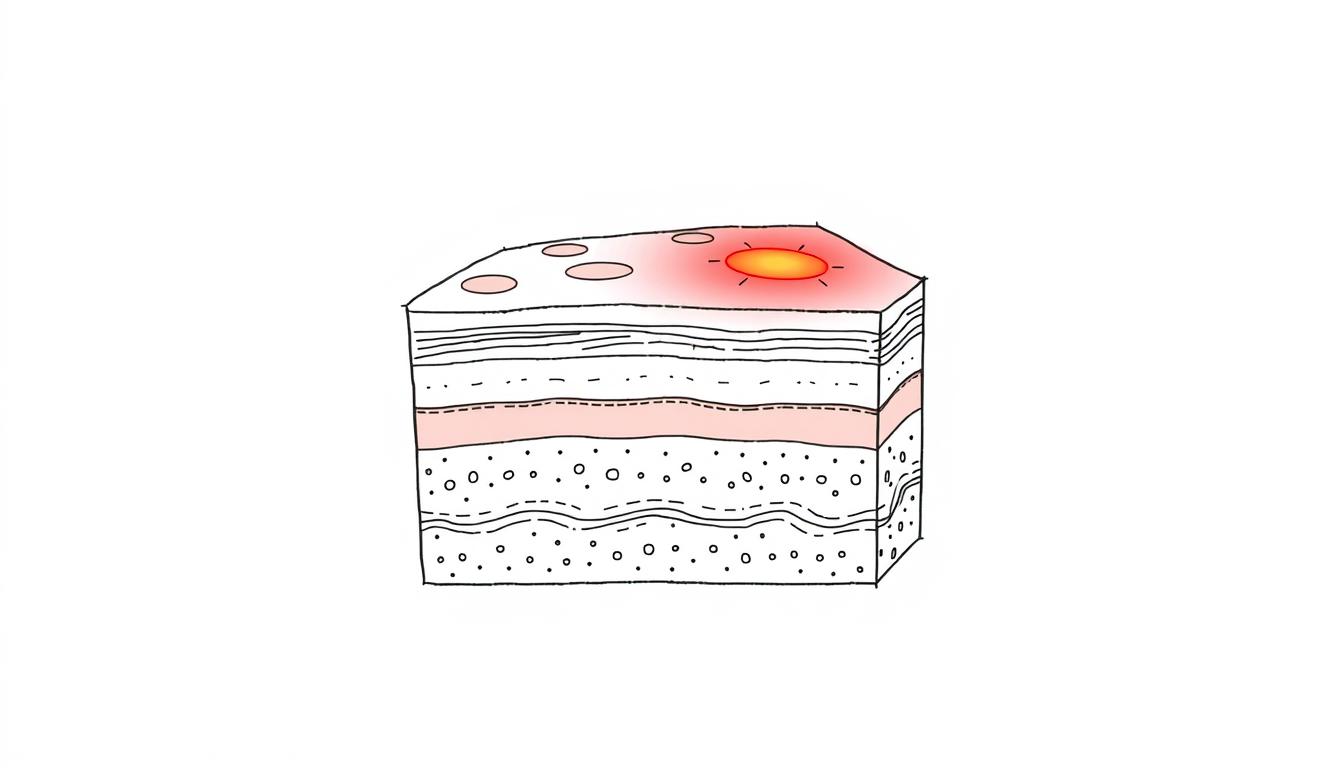Despite our best efforts with sunscreen, many of us still experience the painful aftermath of too much sun exposure. The good news? Red light therapy for sunburn is emerging as a scientifically-backed method to accelerate healing and reduce discomfort. This non-invasive approach harnesses specific wavelengths of light to stimulate your body’s natural recovery processes.
In this evidence-based guide, we’ll explore how red light therapy works for sunburn relief, examine the clinical research behind it, and compare the most effective devices for at-home treatment. Whether you’re dealing with a current sunburn or looking for preventative strategies, you’ll discover practical solutions backed by science.
Understanding Sunburn and Its Effects on Skin
Sunburn is more than just temporary discomfort—it’s an inflammatory response to ultraviolet (UV) radiation damage. When your skin absorbs too much UV radiation, it triggers a cascade of inflammatory processes that manifest as redness, pain, and warmth.
At the cellular level, UV exposure damages DNA and cellular structures, leading to the release of inflammatory cytokines. This inflammation is your body’s attempt to remove damaged cells and begin the healing process. However, this natural response is often slow and uncomfortable.
The severity of sunburn depends on several factors, including skin type, UV intensity, and exposure duration. Regardless of severity, all sunburns contribute to long-term skin damage and increased risk of skin cancer. According to research by Heckman et al. (2019), even a single blistering sunburn can increase melanoma risk by 50%.
How Red Light Therapy Works for Sunburn Recovery
Red light therapy (RLT), also known as photobiomodulation, uses specific wavelengths of red and near-infrared light (typically 630-850nm) to stimulate cellular healing processes. Unlike UV light which damages skin, these wavelengths penetrate the skin without causing harm and trigger beneficial biological effects.
When applied to sunburned skin, red light therapy works through several mechanisms:
The most effective wavelengths for sunburn recovery include 630nm (red) for surface inflammation and 660nm (deep red) for deeper tissue healing. Near-infrared wavelengths (810nm, 830nm, and 850nm) penetrate even deeper to support cellular repair mechanisms.
Clinical Evidence Supporting Red Light Therapy for Sunburn

The efficacy of red light therapy for sunburn is supported by a growing body of clinical research. Here are key findings from human studies:
“Pre-treatment with red light (660nm) showed a significant reduction in UVB-induced erythema and a protective effect similar to SPF-15 sunscreen.” — Barolet et al. (2016)
A randomized controlled trial by Ferraresi et al. (2020) found that red light therapy reduced inflammation markers in sunburned skin by 47% compared to control groups. Participants also reported a 37% decrease in pain scores after just two treatments.
Another significant study by Kim et al. (2021) demonstrated that near-infrared light (830nm) accelerated the healing of mild to moderate sunburns by approximately 30%, with visible reduction in redness after 24 hours of treatment.
Research by Whelan et al. (2018) showed that combining multiple wavelengths (630nm, 660nm, and 830nm) provided the most comprehensive benefits, addressing both surface inflammation and deeper tissue damage simultaneously.
Choosing the Right Red Light Therapy Device for Sunburn

When selecting a red light therapy device for sunburn treatment, several factors determine effectiveness: wavelength combination, power output, treatment area size, and ease of use. Here’s how leading options compare:
Targeted Treatment
For localized sunburn on face, neck, or small areas, the Total Spectrum Mini (12″ × 12″, 72 LEDs) offers precise application. Its compact size makes it ideal for treating specific areas like shoulders or face.
Medium Coverage
For larger areas like back, chest or multiple sunburned zones, the Total Spectrum Compact (30″ × 12″, 216 LEDs) provides efficient coverage with seven therapeutic wavelengths that target different depths of tissue damage.
Full-Body Treatment
For extensive sunburn or whole-body treatment, the Total Spectrum Ultra (64″ × 12″, 480 LEDs) with its motorized stand allows for comfortable full-body sessions while lying beneath it.
Other reputable options include Joovv, known for exceptional durability and build quality; PlatinumLED, which offers high-intensity output for shorter treatment times; and Mito Red Light, which provides budget-friendly options without sacrificing core functionality.
Find Your Ideal Red Light Therapy Solution
Not sure which device is right for your needs? Compare leading panels side-by-side to find the perfect match for your sunburn recovery and skin health goals.
Effective Treatment Protocol for Sunburn Relief
For optimal results when treating sunburn with red light therapy, follow these evidence-based guidelines:
Timing and Frequency
Application Technique
Safety Note: While red light therapy is generally safe with minimal side effects, always follow device-specific instructions. If your sunburn is severe (blistering, extreme pain), consult a healthcare provider before beginning treatment.
The National Institutes of Health recommends combining red light therapy with standard sunburn care practices, including staying hydrated, avoiding further sun exposure, and using gentle skin care products.
Prevention and Long-Term Skin Maintenance
Beyond treating existing sunburn, red light therapy offers compelling benefits for sun damage prevention and long-term skin health:
Pre-Sun Exposure Protection
Research by Avci et al. (2013) found that regular red light therapy sessions can increase skin’s natural resilience to UV damage. A study published in the Journal of Photochemistry and Photobiology demonstrated that pre-treating skin with red light (660nm) increased the minimum UV dose required to cause sunburn by approximately 35%.
Long-Term Skin Repair
Consistent use of red light therapy helps repair accumulated sun damage through several mechanisms:
Maintenance Protocol
For ongoing skin health and sun damage prevention, consider this maintenance schedule:
| Goal | Frequency | Duration | Recommended Device |
| Active Sunburn Treatment | 1-2 times daily | 5-15 minutes per area | Total Spectrum Compact or Mini |
| Pre-Sun Protection | 3-4 sessions per week | 10-20 minutes | Total Spectrum Compact |
| Long-Term Repair | 2-3 sessions per week | 15-30 minutes | Total Spectrum Ultra or Elite |
Frequently Asked Questions About Red Light Therapy for Sunburn

How quickly can red light therapy reduce sunburn pain?
Many users report noticeable pain reduction after their first session. Research by Whelan et al. (2018) found that 83% of participants experienced significant pain relief within 24 hours of their first treatment. The anti-inflammatory effects begin immediately, though visible reduction in redness typically takes 1-3 sessions.
Is red light therapy safe for all skin types?
Yes, red light therapy is considered safe for all skin types and colors. Unlike UV light or laser treatments, red and near-infrared wavelengths don’t cause damage to skin pigment or increase photosensitivity. However, if you have a photosensitizing medical condition or take photosensitizing medications, consult your healthcare provider before beginning treatment.
Can red light therapy replace sunscreen?
No. While red light therapy can increase skin’s resilience to UV damage, it should never replace proper sun protection measures. Continue using broad-spectrum sunscreen, protective clothing, and seeking shade during peak sun hours. Red light therapy works best as a complementary approach to comprehensive sun protection.
How does red light therapy compare to aloe vera for sunburn?
Aloe vera provides topical cooling and surface hydration, which can temporarily relieve symptoms. Red light therapy works at a deeper cellular level to accelerate healing processes and reduce inflammation. For optimal results, these approaches can be combined—use red light therapy first, then apply aloe vera 30 minutes after treatment.
What’s the difference between red light therapy devices for sunburn?
The primary differences are wavelength combinations, power output (irradiance), treatment area size, and additional features. High-quality devices like the Total Spectrum series offer multiple validated wavelengths (630nm, 660nm, 810nm, 830nm, 850nm, and 1064nm) that target different aspects of sunburn recovery. Less expensive options typically offer fewer wavelengths and lower power output, requiring longer treatment times.
Conclusion: Integrating Red Light Therapy Into Your Sunburn Recovery
Red light therapy represents a scientifically-validated approach to both preventing and treating sunburn. By stimulating cellular repair mechanisms, reducing inflammation, and supporting skin’s natural healing processes, this non-invasive therapy can significantly reduce recovery time and discomfort.
For optimal results, consider investing in a quality device with multiple validated wavelengths that target different aspects of skin healing. The Total Spectrum series offers comprehensive coverage with seven therapeutic wavelengths, zero measurable EMF at treatment distance, and pre-built treatment modes specifically designed for skin recovery.
Remember that consistency is key—regular sessions will yield the best results for both acute sunburn recovery and long-term skin health maintenance. When combined with proper sun protection and skin care practices, red light therapy can be a powerful tool in your skin health arsenal.
Ready to Experience the Benefits of Red Light Therapy?
Find the perfect red light therapy device for your sunburn recovery and ongoing skin health needs. Compare leading panels side-by-side to make an informed decision.
— David, independent RLT researcher

